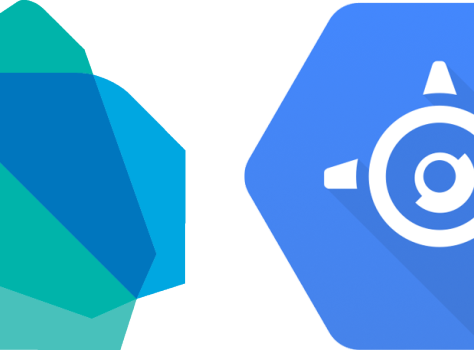Google Dart App
Trending Hot : Google Dart App 2014-2015 has got Unveiled.Earlier this year at its I/O developer conference, Google quietly announced plans for supporting its Dart Programming language on App Engine.
It’s taken a bit longer than many expected, but starting today, developers can run their Dart server-side application on Google App Engine’s Manage VMs.
Dart is often seen as Google’s answer to JavaScript and, hence, mostly meant to run in the browser. But as Lars Bak and Kasper Lund, the inventors of Dart, told me back at I/O, the idea behind Dart was always to create a general purpose programming language.
Using Docker, developers were already able to deploy Dart on Google Compute Engine. App Engine, however, gives developers easier access to a wider range of features out of the box, including Google’s Data Store and caching services, as well as monitoring and logging tools.
All developers have to do — besides write their Dart apps — is upload their applications and App Engine will handle scaling and data storage as needed. It can even auto-scale your application for you in response to traffic.
Google says it will continue to improve Dart support on App Engine in the near future. This means adding support for more App Engine APIs, for example.
This implementation will use the company’s recently launched managed virtual machines and the service’s custom runtime support. Because custom runtime support is still in private beta, however, the Dart team isn’t able to release this to the public just yet, but Google provided a sneak peek to Dart developers at I/O of what this would look like.
Most developers look at Dart as a JavaScript competitor. In many ways, that’s fair, given that it is clearly geared toward similar use cases and that Google offers a version of its Chrome browser with the Dart virtual machine built-in.
Google also offers a Dart-to-JavaScript compiler and plenty of tools for web developers. The ambition behind Dart is much bigger, though, so it maybe shouldn't have been a surprise that the team is bringing its run time to App Engine and other servers, as well.
App Engine lets you build and run applications on Google’s infrastructure, providing high performance, load balancing, security, and other benefits. Previously, App Engine ran all applications in a secure, sandboxed environment and supported four programming languages: Python, Java, Go, and PHP.
Now, in addition to the sandboxed hosting environment, App Engine supports Managed VMs for hosting your apps. This VM-based hosting environment offers more flexibility, and provides more CPU and memory options. In addition, it allows applications to be written in any programming language, including Dart.
It’s taken a bit longer than many expected, but starting today, developers can run their Dart server-side application on Google App Engine’s Manage VMs.
Dart is often seen as Google’s answer to JavaScript and, hence, mostly meant to run in the browser. But as Lars Bak and Kasper Lund, the inventors of Dart, told me back at I/O, the idea behind Dart was always to create a general purpose programming language.
Using Docker, developers were already able to deploy Dart on Google Compute Engine. App Engine, however, gives developers easier access to a wider range of features out of the box, including Google’s Data Store and caching services, as well as monitoring and logging tools.
All developers have to do — besides write their Dart apps — is upload their applications and App Engine will handle scaling and data storage as needed. It can even auto-scale your application for you in response to traffic.
Google says it will continue to improve Dart support on App Engine in the near future. This means adding support for more App Engine APIs, for example.
This implementation will use the company’s recently launched managed virtual machines and the service’s custom runtime support. Because custom runtime support is still in private beta, however, the Dart team isn’t able to release this to the public just yet, but Google provided a sneak peek to Dart developers at I/O of what this would look like.
Most developers look at Dart as a JavaScript competitor. In many ways, that’s fair, given that it is clearly geared toward similar use cases and that Google offers a version of its Chrome browser with the Dart virtual machine built-in.
Google also offers a Dart-to-JavaScript compiler and plenty of tools for web developers. The ambition behind Dart is much bigger, though, so it maybe shouldn't have been a surprise that the team is bringing its run time to App Engine and other servers, as well.
App Engine lets you build and run applications on Google’s infrastructure, providing high performance, load balancing, security, and other benefits. Previously, App Engine ran all applications in a secure, sandboxed environment and supported four programming languages: Python, Java, Go, and PHP.
Now, in addition to the sandboxed hosting environment, App Engine supports Managed VMs for hosting your apps. This VM-based hosting environment offers more flexibility, and provides more CPU and memory options. In addition, it allows applications to be written in any programming language, including Dart.




Comments
Post a Comment